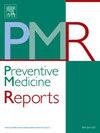中国带状疱疹的费用负担和时间趋势:来自北京健康记录的证据
IF 2.4
3区 医学
Q2 PUBLIC, ENVIRONMENTAL & OCCUPATIONAL HEALTH
引用次数: 0
摘要
目的:带状疱疹对中国老年人口健康构成重大威胁。本研究旨在分析中国带状疱疹的费用负担和时间趋势。方法纳入2016 - 2023年15家医院的带状疱疹门诊患者和2013 - 2023年175家医院的带状疱疹住院患者。我们采用描述性分析和对数线性模型来调查带状疱疹相关的成本负担及其在选定时期的时间趋势。结果在过去8年中,所选医院的门诊人次增加了约23.8%,住院人次增加了约124.8%。约23.6%的门诊病例年龄在45岁以下。每次门诊费用在57美元左右波动,而每次住院费用增加了20%以上,2023年达到1931美元左右。老年患者和带状疱疹后神经痛患者经历了更高的带状疱疹相关医疗费用和利用率。结论我们的研究结果表明,尽管中国每次就诊或出院的平均费用变化不大,但对带状疱疹医疗保健需求的增长凸显了加强预防工作以减轻个人和医疗保健系统负担的必要性。本文章由计算机程序翻译,如有差异,请以英文原文为准。
Cost burden and temporal trends of herpes zoster in China: Evidence from Beijing's health records
Objective
Herpes zoster poses a significant health threat to the aging population in China. This study aimed to analyze the cost burden and temporal trends of herpes zoster in China.
Methods
This study encompassed herpes zoster outpatients from 15 hospitals between 2016 and 2023 and herpes zoster inpatients from 175 hospitals between 2013 and 2023. We used descriptive analysis and log-linear model to investigate herpes zoster related cost burden and their temporal trends during the selected period.
Results
Over the past eight years, outpatient visits increased by about 23.8 % across the selected hospitals, while inpatient discharges increased by approximately 124.8 %. About 23.6 % of the outpatient cases were under 45 years of age. The cost per outpatient visit fluctuated at approximately 57 USD, while the cost per hospitalization increased by over 20 %, reaching around 1931 USD in 2023. Older patients and those with post-herpetic neuralgia experienced higher herpes zoster related healthcare costs and utilization.
Conclusions
Our findings suggest that although the average cost per visit or discharge changed little in China, the growing demand for herpes zoster healthcare highlights the necessity of more preventive efforts to reduce the burden on both individuals and the healthcare system.
求助全文
通过发布文献求助,成功后即可免费获取论文全文。
去求助
来源期刊

Preventive Medicine Reports
Medicine-Public Health, Environmental and Occupational Health
CiteScore
3.90
自引率
0.00%
发文量
353
 求助内容:
求助内容: 应助结果提醒方式:
应助结果提醒方式:


